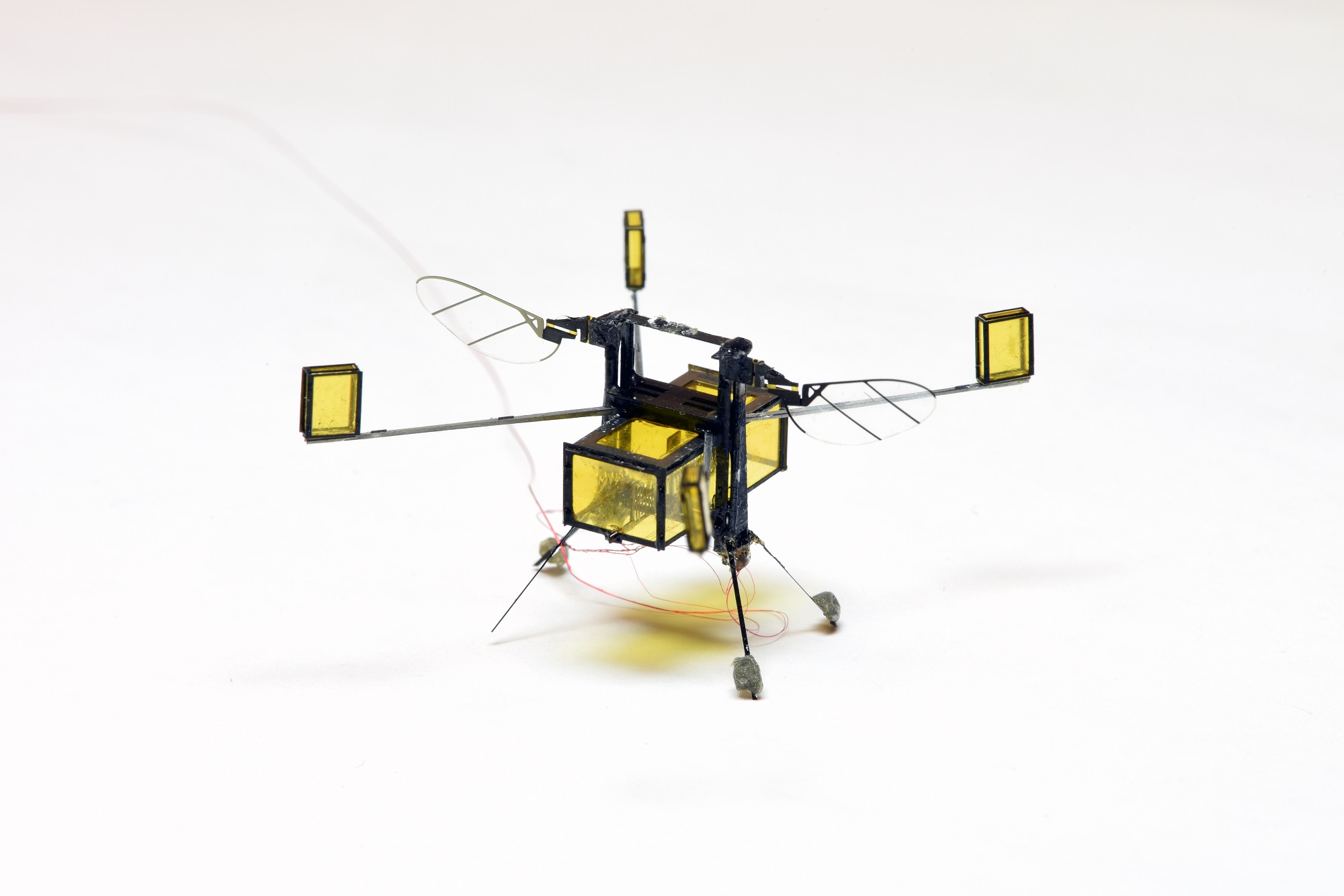Harvard Made a RoboBee That Can Fly Out of Water

Credit to Author: Jacob Dubé| Date: Wed, 25 Oct 2017 18:52:08 +0000
Last we checked in with autonomous robo-bees, they were fictional killer drones in Black Mirror. Harvard’s new (real) drone bees are considerably less threatening, at least for the moment.
A group of researchers from the Harvard John A. Paulson School of Engineering and Applied Sciences and the Wyss Institute for Biologically-Inspired Engineering have created an upgraded version of the RoboBee—an autonomous flying microbot with bee-like wings—that is able to fly, dive into water, and then fly out of the water, which is something that has been challenging for robotics of that size. And it’s very cute to watch.
Human’s don’t really have an issue with getting in and out of water, because our weight allows us to break through the water’s surface tension. The RoboBee, however, only weighs about 175 milligrams, which means it’s significantly harder for it to find the force to penetrate the surface once it’s submerged.
In their study, published Wednesday in Science Robotics, the researchers said they solved this problem by adapting how fast the wings flap in and out of water—if the RoboBee flaps its wings too hard underwater, they might break off—as well as adding small bee-sized flotation devices and a chamber that converts water into oxyhydrogen, a gas used in combustion. The wings and floaties get it to the surface, and the combustion shoots it out.
“Because the RoboBee has a limited payload capacity, it cannot carry its own fuel, so we had to come up with a creative solution to exploit resources from the environment,” Elizabeth Farrell Helbling, co-author of the study, told Science Robotics.
The researchers hope to use these robots for search-and-rescue as well as biological studies. As long as it’s trying its best.